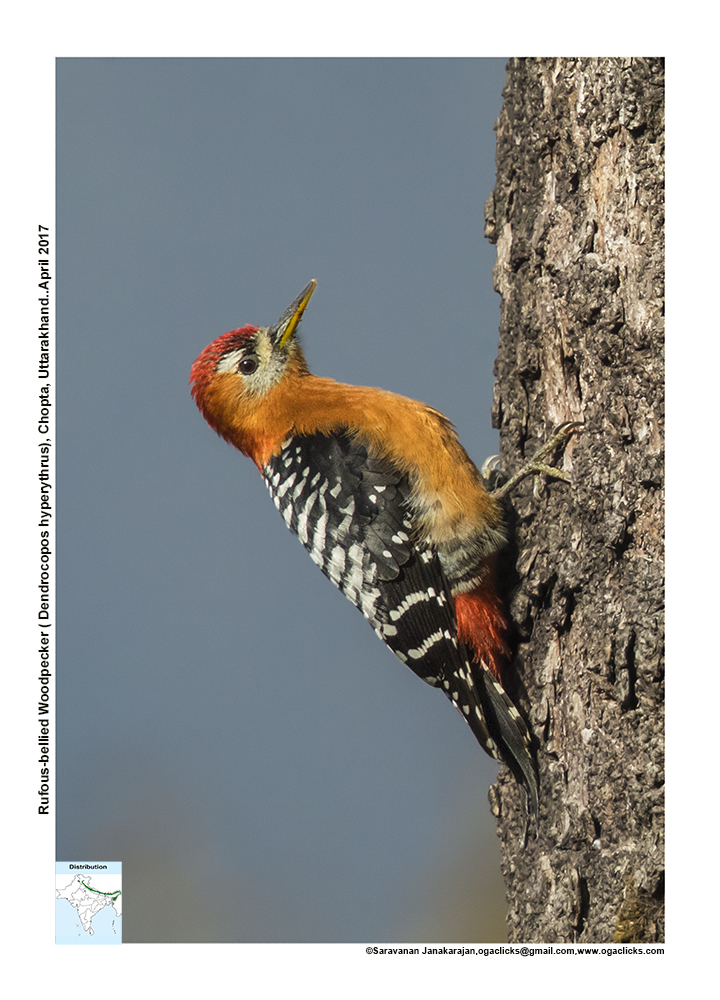Rufous-bellied Woodpecker

Rufous-bellied woodpecker Dendrocopos hyperythrus
Etymology:
- Dendrocopos : Greek word dendron tree; kopos- striking
- Hyperythrus : Greek word hupo- beneath; eruthros- red
Vernacular names: Cachar: Daoja gadaiya ko gajao
Distribution in India: Resident of Himalayas and North East in India.
Description: Size of 20–25 cm; wt. of 40–53 g. The male has bright red forehead to nape , nape is tinged orange, a few black feather bases showing on crown; white lores, white forecheeks and thin line over and just behind eye. It has a few greyish marks in loral area; whitish malar region with dusky streaks; rest of head is rufous-chestnut; entire upperparts is black, mantle to upper rump is barred white, bars are broadest on upper back, wing-coverts and flight-feathers have white spots forming bars. The uppertail is black, outer two feather pairs barred white; rufous-chestnut continues over underparts, pinkish-red lower belly and undertail-coverts, narrow band of black and white bars on lower belly sides and flanks. It has a long bill almost straight, chisel-tipped, black or blackish, lower mandible pale yellow or greener. The iris is red-brown to pale reddish or deep brown and legs are olive to greenish grey or slaty. The female has black forehead to hindneck with white spots, occasionally a few red feather tips. The juvenile has white-spotted black crown, streaked head, heavily streaked throat, upperparts are more spotted than barred, browner wings, brownish underparts are barred black and white, paler pinkish on vent, darker brown eyes, male with many orange-red tips on crown, female with fewer; adult plumage acquired gradually, traces of juvenile plumage still evident in winter.
Habitat: It is found in broadleaved forest and mixed and coniferous forest. It is found from 1800m to 4300m.
Food habits: It eats Insects like ants, beetles, Orthoptera, Lepidoptera and caterpillars and vegetable matter like tree sap in spring. It forages on tree trunks in the canopy; probes frequently, also hammers and gleans. It also catches prey on the wing. It creates sap wells by drilling dense rows small holes girdling trunks of various tree species.
Breeding habits: They breed in Apr–May in Bhutan, Nepal and India and Mar–May in SE Asia. The nest is a typical woodpecker hole excavated in trunk of tree, including pines. They lay a clutch of 4–5 eggs. Both parents care for chicks.